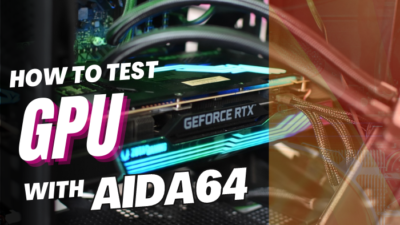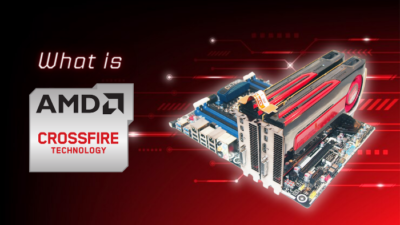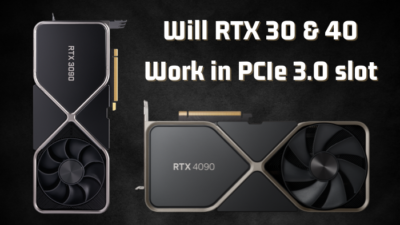While playing a 3D game or using heavy programs, users often face performance issues like glitches, lags, or random dots & lines on the display for various reasons.
GPU artifacts or artifacting is a rare event. However, old graphics card users often encounter GPU artifacting where they see random lines, distorted colors, or incidental symbols.
In this article, I will cover the whole nine yards of GPU artifacts and the procedure for fixing the issue.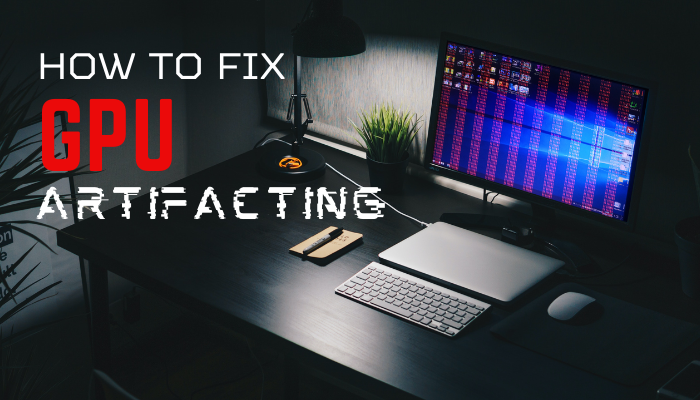
So, let’s get started!
What is Artifact & What is GPU Artifacting?
When a computer processes digital data and fails to transmit it smoothly to the output display and shows irregular dots or lines, it is known as an artifact. If the main culprit behind the artifacts is the GPU, then it is called GPU artifacting.
A visual artifact can occur in both images and videos. There are no permanent symptoms of GPU artifacts, and you may encounter random lines, symbols, distorted colors, or random lights because of GPU artifacts.
Besides, you may notice some textures are out of place, screen flickering, white flashes, a blackout of the display, a checkerboard pattern, or a display of static noise due to the GPU artifacts.
As you can see, the list of artifacts symptoms is incredibly huge, and it can occur in numerous ways, forms, sizes, and shapes.
In most scenarios, you will notice the artifacts only in older GPUs. Usually, the new graphics card doesn’t display any artifacts. However, if you used to play a ton of 3D games or videos, you will probably encounter GPU artifacts.
How to Fix GPU Artifacting
GPU artifacting can mess up the smoother gaming experience. However, you can quickly resolve the issue by updating the graphics driver, underclocking the GPU, improving the existing cooling system, ensuring proper cable connection, and checking for damages.
If you are facing GPU artifacting while playing intensive games or using creative tools, consider the following procedures to stop GPU artifacting problems.
Here are the methods to resolve the GPU artifacting issue:
1. Update Graphics Driver
Though graphics card manufacturers release graphics drivers after ensuring it contains no bugs, sometimes, they can release a faulty driver that leads to numerous issues including the GPU artifacts.
If you face GPU artifacting right after installing a new driver, you can always roll back to the working version. Otherwise, you should update the driver to the latest version.
Go through the subsequent instructions to update your graphics driver or to roll back to the recent stable version.
Check the following procedure to update your graphics driver:
- Press Windows + X keys and select the Device Manager from the menu.
- Expand the Display adapters and double-click on the GPU.
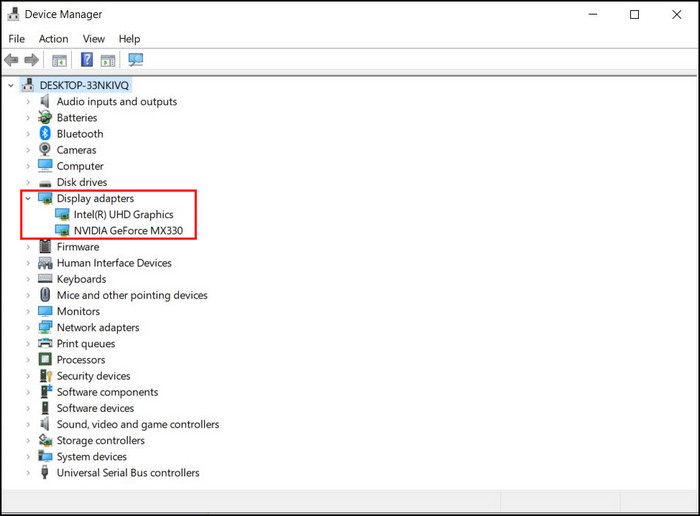
- Switch to the Driver tab and select Roll Back Driver to use the last graphics driver.
- Click on the Update Driver to install the updated driver for the GPU.
- Select OK to save the changes.

Quick Note: If you encounter GPU artifacts right after upgrading the graphics driver, rolling back the driver will help to resolve the issue.
Updating the graphics driver should resolve the GPU artifacts problem. However, if the problem persists, move on to the following fixes.
2. Remove Overclocking
Overclocking can dramatically increase GPU performance. Despite that, it can also bring disaster sometimes by producing a ton of heat.
If you overclocked your GPU and noticed GPU artifacts after the overclocking, you should turn off the overclocking. You can simply delete the application that was used to overclock the GPU to remove overclocking.
Contrarily, if you used the BIOS settings to overclock the GPU, check the subsequent instructions to stop GPU overclocking.
Here’s the way to turn off GPU overclocking:
- Restart your computer and press the F1, F2, F10, Delete, or Esc keys, depending on your system to enter the BIOS page.
- Locate Load Default Settings and press the key.
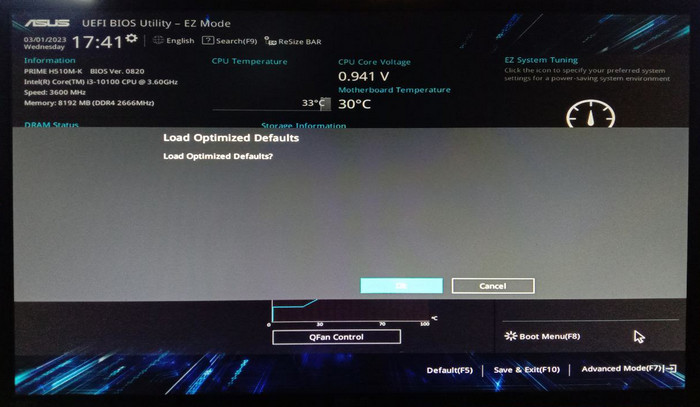
- Save and Exit by pressing the respective key.
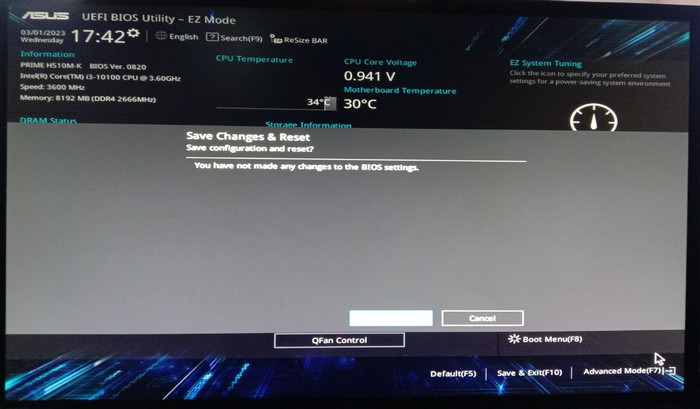
Turning off the overclocking will reduce the stress on the GPU and fix the GPU artifacts issue. If that doesn’t help, you should consider underclocking the GPU to resolve the problem.
3. Improve the Cooling System
A GPU processes thousands of calculations every second, and many calculations produce a ton of heat. If the GPU cooling system fails to handle the overheating during heavy multitasking or gaming, you may notice GPU artifacts on the screen.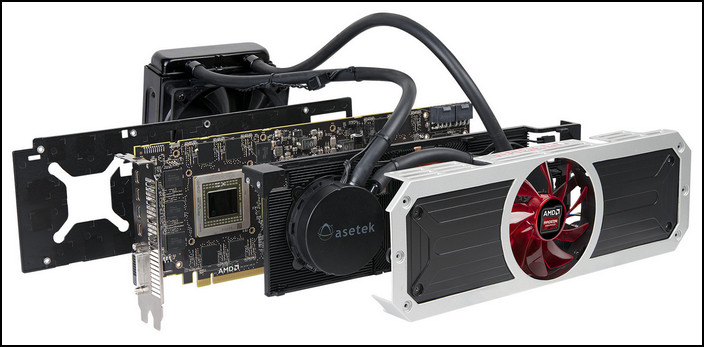
Closely monitor your GPU cooling system’s efficiency when the temperature rises. If the system cannot handle the over temperature, try to adjust the fan curves to increase efficiency.
Another way to improve the cooling system is undervolting your GPU. Undervolting can considerably reduce the temperature without a significant performance drop.
4. Check for Damages
Look for physical damages on the printed circuit board (PCB). If you notice any damages on the PCB, you must repair it or replace it if you are under warranty coverage.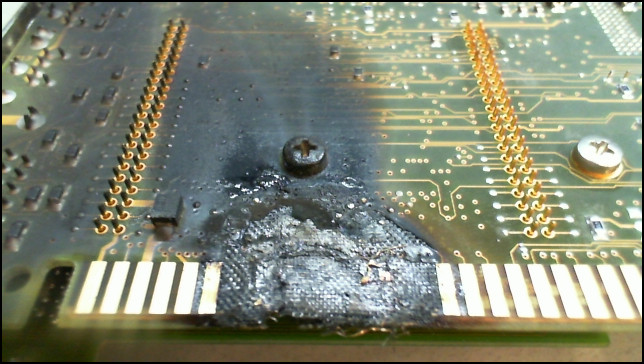
Disassembling the graphics card is prohibited for beginners because it can damage the inner components. While disassembling the card, seek help from an experienced person.
5. Make Proper Connections
A computer connects multiple components to function properly. However, if the connection between the parts is faulty, it may lead to numerous issues.
Similarly, a GPU is connected to several PC components such as a PCIe slot, power supply, and display. A loose cable connection between the components can cause the GPU artifact’s problem.
So, carefully inspect the cable connections and ensure all are functioning properly. You can detach the connections and reattach the components to ensure a proper connection.
The above methods should already resolve the GPU artifacting problems. However, if you are still facing the same issue, I have some additional tips to stop the GPU artifacting. For additional tips, move on to the next section.
Additional Tips to Stop GPU Artifacting
Fixing GPU artifacting needs more than usual methods to eliminate the issue. That’s why I have added some additional processes to resolve GPU artifacts. Cleaning the GPU unit, freeing up VRAM space, and changing the thermal paste can resolve the issues with the GPU.
The power supply unit (PSU) can also lead to the artifact’s problem because a damaged or faulty PSU is unable to supply sufficient energy needed for the graphics card.
Consider the following discussion before blaming your GPU for artifacts on the display, and follow the guide to resolve the artifacting problem.
Go through the subsequent discussions to stop GPU artifacting:
Clean Your GPU
A GPU can last up to several years, depending on the usage. If you have been using a GPU for the past few years, the GPU fans can collect a ton of dust, reducing the heat dissipation ability.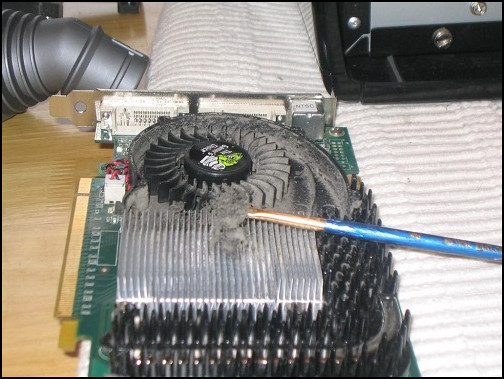
In that case, you must clean the GPU in order to efficiently handle the high temperature produced by the graphics card. Use a brush and an air blower to perfectly clean your GPU.
Change Thermal Paste
If cleaning the GPU doesn’t help to resolve the GPU artifacts issue, you should consider changing the thermal paste.
Thermal paste is responsible for lowering the overall GPU temperature. After properly cleaning the GPU, you can apply thermal paste by following the instructions below.
Here’s the way to change GPU thermal paste:
- Detach the GPU from the computer.
- Clean it appropriately using a brash and air blower.
- Locate the thermal paste on the GPU surface.
- Remove the old thermal paste and apply the new paste.
- Cool down the GPU using an external fan.
After cooling down the GPU, connect it to the computer and check whether this procedure resolves the GPU artifacting issue on the output display.
Free up VRAM Space
Video Random Access Memory (VRAM) is used to store the rendering information. When the VRAM space doesn’t have enough storage left for storing new information, the games start to show several glitches, including the GPU artifacts.
Freeing up the VRAM space can improve the overall performance. So, how to free up VRAM space?
Well, by deleting unused games & programs and closing the background applications, you can efficiently clear the VRAM space.
Check Power Supply Unit
GPU is the most power-hungry component of a computer. If the power supply cannot provide enough power for the GPU, you may encounter several issues like GPU artifacts.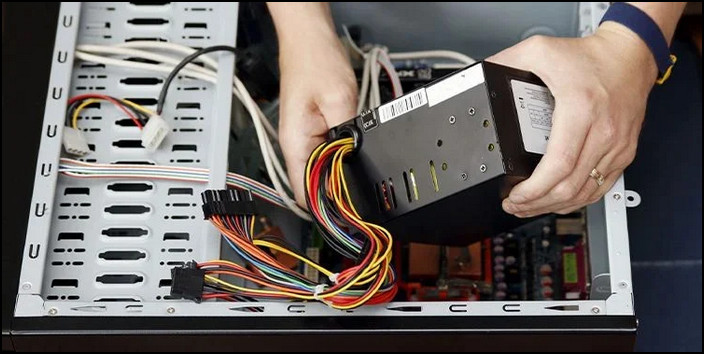
You should connect the PSU to another system to determine if the PSU can supply enough power for all computer components. Also, ensure the PSU can handle the minimum power required for every PC part.
If you don’t find any issue with the power supply unit, then your graphics card might be damaged, and you should replace the GPU to avoid any further damage.
How to Test If the GPU is Artifacting
Running a stress test can quickly determine whether the GPU is artifacting. If the GPU artifacting is occurring because of overheating, a stress test can identify the problem to resolve it efficiently. You can start a stress test using several applications like Furmark or 3DMark.
If you are always facing artifacts, the problem can be with the monitor, adapters, or ports. So, it’s essential to identify what is causing the artifacts.
So, can you spot GPU artifacting?
To spot whether the main culprit is the GPU, you need to use a working display unit and an adapter. After connecting the new components, run the applications that were artifacts earlier.
In case your device is running without showing any artifacts with the new hardware indicates that the GPU is not faulty, and you need to change the display device or your adapters.
Consider the following list of programs to test for artifacting GPUs.
Check the following list of stress-testing applications:
| Program | Platform | Price | Stress Capacity |
|---|---|---|---|
| Furmark | Windows | Free | Extremely High |
| Speccy | Windows | Free | Extremely High |
| 3Dmark | Android, iOS, Windows, macOS | Paid | Very High |
| V-Ray 5 | Windows, macOS, Linux | Paid | Very High |
| Heaven Unigine | Windows, macOS | Free | Very High |
| Paessler | Windows, macOS | Free | Very High |
Download any of the above programs and install them on your device. After installing the application, click on the Stress Test button. Closely, inspect the GPU to identify overheating. If your GPU is overheating during the test, ensure to upgrade the existing cooling system.
What Causes the GPU Artifacts?
GPU artifacts mainly occur during the play of heavy 3D games and videos. The main reason behind the GPU artifacts is overclocked GPU, faulty drivers, improper graphic settings, and GPU overheating. Furthermore, an old GPU can also lead to the GPU articulating issue.
The GPU artifacts can be both a hardware or software issue. Consider the subsequent discussion for understanding the reasons behind GPU artifacts.
Go through the following discussion for common reasons for GPU artifacts:
High Temperature
Most modern electronic devices produce a large amount of heat while functioning. That’s why we see various cooling systems to prevent the components from overheating.
When the cooling system fails to deal with the overheating, the components (GPU & CPU) can get damaged. The main culprit for high temperature is the faulty cooling fan, dried-up thermal paste, insufficient contact with the component, dust, etc.
Suppose your GPU faces any of the above issues and cannot distribute the heat. In that case, the overall temperature will rise, and you will notice significant performance drops and even GPU artifacts.
Overclocked GPU
Overclocking allows users to boost the CPU and GPU performance. Users can dramatically increase the average FPS and overall performance by tweaking the core voltages and clock frequencies.
Though it’s not certain that overclocking can cause GPU artifacts, sometimes it can undoubtedly lead to the artifacts issue.
Outdated Graphics Driver
Graphics drivers are essential to connect the GPU with other computer components to work seamlessly. However, a faulty driver cannot perform its task, leading to numerous issues.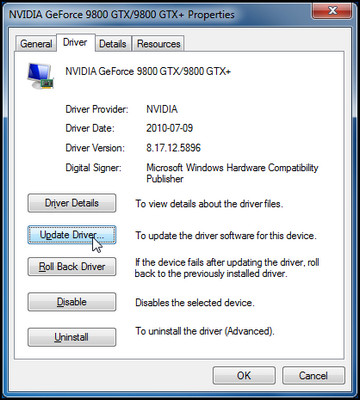
GPU manufacturers giants like Nvidia and AMD always provide the best and most optimized driver versions to avoid unexpected circumstances. A faulty or outdated driver can cause the GPU artifacting issue.
Application Incompatibility
Another reason for GPU artifacts is incompatible applications. If you notice the artifacting only for a particular application, that application may not be compatible with your GPU; hence, it shows artifacts.
High Graphics Settings
With the utility applications, users can quickly change the GPU settings such as display settings, features enabling & disabling, setting fan curves, and many other GPU parameters.
Besides, users can also change the in-game settings like graphics level, FPS, texturing, and so on. High settings in utility applications or higher in-game settings can cause GPU artifacting problems.
Defective VRAM
VRAM refers to a particular type of random access memory (RAM) that stores image data for a display or monitor.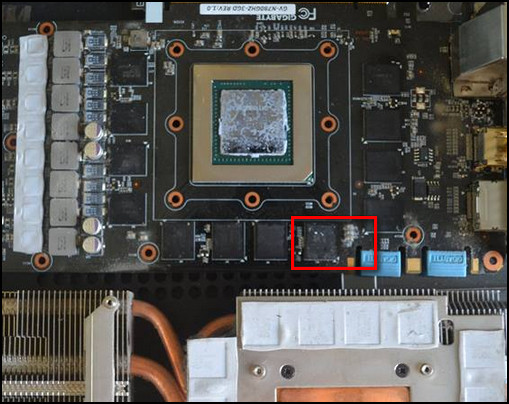
You can compare the VRAM with the RAM in a particular way. For instance, RAM stores the data for the CPU.
Contrarily, the VRAM stores the image data for the GPU. When the data in VRAM gets corrupted, you will notice the symptoms of GPU artifacting.
Physically Damaged GPU
If a GPU is partially damaged or has any hardware issue, it fails to perform its full potential. Even a problem with the power supply unit (PSU) and a fault in the silicon can reduce the performance, leading to GPU artifacting or GPU malfunction.
Obsolete Graphics Cards
Outdated or old GPUs sometimes cannot cope with the modern powerful CPU and the latest operating system because of compatibility issues.
When the graphics card becomes obsolete, it might not work as it should, leading to several problems, including GPU artifacting.
Faulty Power Supply Unit
GPUs process zillions of calculations every second, and they need comparatively more power than other computer components to do the calculations.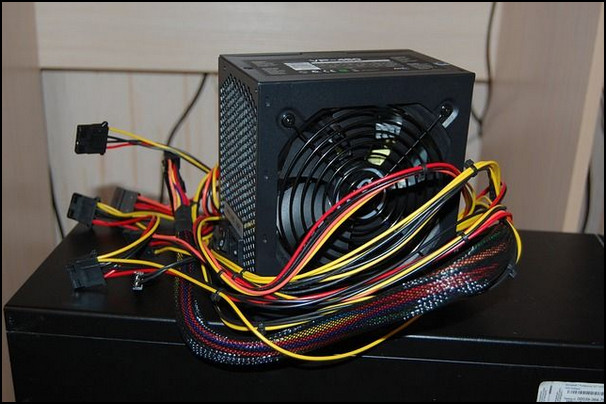
When a faulty PSU cannot supply enough power for the GPU, the graphics card fails to perform accordingly, leading to the GPU artifact’s issue.
Damaged Cable Connection
Cables are used to connect different PC parts. All data and power are supplied through the cable connection.
If you use a damaged cable to connect the GPU to the motherboard, it often fails to transfer all data, leading to several GPU issues, including GPU artifacts.
Frequently Asked Questions
Can dust cause GPU artifacts?
Yes, dust is considered the enemy of the GPU. The GPU cooling system can mainly be affected by dust, which can cause GPU artifacts.
Do GPU artifacts show up in screenshots?
If the GPU is artifacting, you will notice the artifacting even on the screenshot. However, if the screenshot shows no artifacts, the problem is with your monitor.
Can a computer crash for GPU artifacts?
Though the GPU artifact is totally a graphics card related issue, it can often crash the entire computer. Hence, you should avoid using any damaged graphics card.
Is GPU Artifacting Permanent?
No, GPU artifacting is not permanent. However, it pushes your GPU into unsafe territory, and soon it can entirely damage the GPU.
Final Thoughts
Graphics cards are usually the most expensive component of a computer and can last up to 5–7 years, depending on the usage.
However, like other components, a GPU can also lead to numerous issues and GPU artifacting is one of them.
In this post, I have covered all the reasons and fixes to deal with the GPU artifacting problem. For further queries regarding this topic, leave a comment below.

